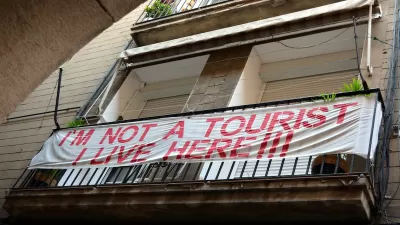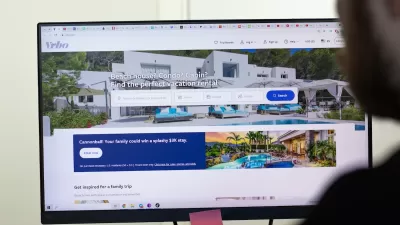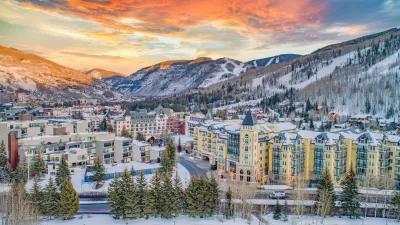This post discusses the argument that even if Airbnb affects an extremely small portion of the rental market, it still matters because of the low vacancy rates of some cities.

A few months ago, I blogged about the impact of Airbnb on rents for traditional month-to-month or year-to-year tenancies. I suggested that this impact was pretty minimal, reasoning as follows: even in a large city such as Los Angeles, Airbnb units are less than 1 percent of all rental units. So even if every single Airbnb unit would (in the absence of Airbnb) otherwise be part of the traditional rental market, Airbnb is unlikely to increase rents in that market.
The comments (and a recent San Francisco Chronicle story) raised an interesting response to my theory: what matters isn't the percentage of all rental units, but the percentage of all rental vacancies or all new housing units. In the words of the Chronicle story: "where a typical year sees just 2,000 new units added, a few hundred units off the market makes a significant dent."
But as I thought about the argument, I was less and less persuaded by it. Here's why: first, the number of vacancies is limited to new housing units. San Francisco has just over 236,000 rental housing units. The units other than the new units are not owned by their current owners or occupants forever: rather, they shift around from occupied to unoccupied as tenants move, and as owner-occupants become landlords or vice versa. So the number of units vacant at any given point in time is a bit higher than the 2000 figure, and the number of units that become vacant at some point over the next year or two will be higher still.
Second, it seems to me that a few hundred units will have little effect upon overall vacancy rates, which in turn means that they will have little effect upon rents. A recent report by the Furman Center [pdf] (affiliated with New York University) lists rental vacancy rates of eleven cities (p.8). San Francisco has the lowest vacancy rate (2.5 percent) and the highest rent ($1491). Boston, New York and Los Angeles are in a virtual three-way tie for second lowest vacancy rate (between 3.4 and 3.5 percent). These three cities are numbers 3-5 in rents (p. 10). (Washington is no. 5 in vacancies but no. 2 in rents, perhaps because Washington is a more affluent city).* At the other end of the spectrum, the two cheapest cities, Houston and Dallas, were no. 10 and no. 9 in rental vacancies. In sum, there seems to be a pretty strong correlation between vacancy rates and rental rates. Since the law of supply and demand suggests that a small supply normally leads to high prices for any commodity, I suspect that this correlation indicates a causal relationship.
The Chronicle story states that "at least 350 entire properties listed on Airbnb ...appear to be full-time vacation rentals, bolstering claims by activists that the services remove scarce housing from the city’s limited inventory." So what would San Francisco's vacancy rate be if these 350 Airbnb units were used for traditional year-to-year rentals instead of shorter tenancies? According to the Furman Center report, there are just over 236,000 rental units in San Francisco (p.40) which means that (assuming the 2.5 percent vacancy rate mentioned above) there are about 5900 rental vacancies. According to the Chronicle story, Airbnb takes 350 rental units off the traditional rental market by turning them into short-term tenancies. So if government compelled those owners to turn their units into year-to-year tenancies, there would perhaps be 6250 rental vacancies. So the rental vacancy rate would be...2.64 percent, still significantly lower than those paragons of affordability New York and Los Angeles. So if the effect of the 350 units upon vacancy rates is that small, it seems to me that their effect upon rents will be that small.
One broader point is what the entire discussion shows about the growth of government regulation of housing. Government uses zoning to artificially constrict the supply of housing (or, in politicianspeak, "protect neighborhoods from overdevelopment"). This in turn causes a housing shortage which leads to higher rents. The higher rents in turn lead to additional government regulation, such as rent control, inclusionary zoning, or (in the case of Airbnb) efforts to prevent property owners from shifting property from the traditional rental market from other markets. In sum, government regulation of housing feeds upon itself.
*The median household income for Washington's renters was just over $46,000, about $5-6,000 higher than the comparable figures for Boston and New York.

Planetizen Federal Action Tracker
A weekly monitor of how Trump’s orders and actions are impacting planners and planning in America.

Map: Where Senate Republicans Want to Sell Your Public Lands
For public land advocates, the Senate Republicans’ proposal to sell millions of acres of public land in the West is “the biggest fight of their careers.”

Restaurant Patios Were a Pandemic Win — Why Were They so Hard to Keep?
Social distancing requirements and changes in travel patterns prompted cities to pilot new uses for street and sidewalk space. Then it got complicated.

Platform Pilsner: Vancouver Transit Agency Releases... a Beer?
TransLink will receive a portion of every sale of the four-pack.

Toronto Weighs Cheaper Transit, Parking Hikes for Major Events
Special event rates would take effect during large festivals, sports games and concerts to ‘discourage driving, manage congestion and free up space for transit.”

Berlin to Consider Car-Free Zone Larger Than Manhattan
The area bound by the 22-mile Ringbahn would still allow 12 uses of a private automobile per year per person, and several other exemptions.
Urban Design for Planners 1: Software Tools
This six-course series explores essential urban design concepts using open source software and equips planners with the tools they need to participate fully in the urban design process.
Planning for Universal Design
Learn the tools for implementing Universal Design in planning regulations.
Heyer Gruel & Associates PA
JM Goldson LLC
Custer County Colorado
City of Camden Redevelopment Agency
City of Astoria
Transportation Research & Education Center (TREC) at Portland State University
Camden Redevelopment Agency
City of Claremont
Municipality of Princeton (NJ)






























